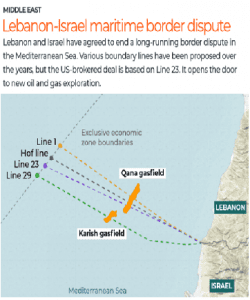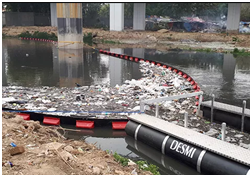INDIAN HISTORY
1. COINAGE WITH IMAGES OF GODS AND GODDESSES’ DATES BACK TO KUSHANS
THE CONTEXT: Amid tensions surrounding the Delhi Chief Minister’s request to the Centre to print pictures of Hindu deities Lakshmi and Ganesh on currency notes according to historians, India has a long tradition of coinage with images of gods and goddesses.
THE EXPLANATION:
- According to historians, the Kushans, who hailed from the Central Asian region and ruled till 3rd century AD, were the first to use the image of Goddess Lakshmi on their coins, along with Ardochsho, the Iranic Goddess of wealth.
- “The Kushans also depicted Oesho [Shiva], moon deity Miro and Buddha in their coinage.
- About the coins with Goddess Lakshmi issued by Mohammed bin Sam, known to us as Mohammed Ghori after defeating Prithviraj Chauhan in the battle of Terrain in 1192 AD.
- Also, the Vijayanagara kings used coinage with Hindu idols. Harihara –II (1377-1404) introduced coins that had Brahma-Saraswati, Vishnu-Lakshmi and Shiva-Parvati.

About Kushanas:
- The Kushan Empire (c. First–Third Centuries) reached its cultural zenith circa 105 – 250 C.E., extended from Tajikistan to Afghanistan, Pakistan and into the Ganges River valley in northern India
- The Kushan tribe of the Yuezhi confederation, believed to be Indo-European people from the eastern Tarim Basin, China, possibly related to the Tocharians, created the empire.
- They were the furthest eastern Indo-European speaking people.
- The emergence of the vast Kushan Empire from the first century AD until its decline in the third century saw the political unification of much of Central Asia, from modern day India and Pakistan to the Iranian borders.
INDIAN POLITY
2. GOVT WILL INTRODUCE NEW DRAFTS FOR IPC, CRPC IN PARLIAMENT SOON: UNION HOME MINISTER
THE CONTEXT: Recently, the union home minister said that Government will soon introduce new draft bills for the Code of Criminal Procedure and the Indian Penal Code in the Parliament.
THE EXPLANATION:
- It may be noted in March 2020, the Central Government had constituted a Criminal Law Reforms Committee to make suggestions to revise IPC, CrPC and the Indian Evidence Act 1872. The Committee was headed by Professor Dr Ranbir Singh, the then VC of National Law University Delhi and other legal experts.
- In February 2022, the Committee submitted a report to the Government, after taking suggestions from the public. In April 2022, the Law Ministry had told the Rajya Sabha that the Government has undertaken a process of comprehensive review of the criminal laws.
Criminal law in India:
- The Criminal law in India is contained in a number of sources – The Indian Penal Code of 1860, the Protection of Civil Rights Act, 1955, Dowry Prohibition Act, 1961 and the Scheduled Castes and Scheduled Tribes (Prevention of Atrocities) Act, 1989.
- Criminal Justice System can impose penalties on those who violate the established laws.
- The criminal law and criminal procedure are in the concurrent list of the seventh schedule of the constitution.
- Lord Thomas Babington Macaulay is said to be the chief architect of codifications of criminal laws in India.
Current concerns/challenges:
- The delay in disposal of cases was leading to human rights violations of the under-trials and convicts.
- Despite the Supreme Court’s directions on police reforms, there had been hardly any changes on the ground.
- Court orders convicting a person are also taking years to implement.
INTERNATIONAL RELATIONS
3. WHAT IS TURKEY’S LATEST ‘DISINFORMATION’ LAW?
THE CONTEXT: Recently, Turkey’s parliament adopted the much-critiqued ‘disinformation law’ that accords jail terms of up to three years to social media users and journalists for spreading ‘disinformation’.
THE EXPLANATION:
What does the law entail?
- Cumulatively known as ‘the disinformation law’, it comprises about 40 articles that would amend about 23 different laws. It designates it an offence to publicly disseminate misleading information about the country’s internal and external security, public order and general well-being for the purpose of causing fear or panic among the populace.
- The Turkish government has argued that the law would combat cases where the internet is used to share illegal content under false names and where anonymous accounts slander and defame individuals of differing political thought, religion or ethnicity. The article introduces a jail term between one and three years for any violation with the extension of an additional half of the initially stipulated term if the actions are done in anonymity.
- To implement this law, social media platforms could now be asked to hand over user data to Turkish courts. This is an extension of the law passed in 2020 that required social media intermediaries to remove or render inaccessible certain flagged content on their platforms. Failure would lead to losing 90% of bandwidth reserved for the platform, effectively implying, being rendered inoperable in Turkey.
India’s Laws and Regulation to Curb Fake News in India
- There is no specific law against fake news in India. Free publication of news flows from Article 19 of the Constitution guaranteeing freedom of speech.
- Press Council of India, a regulatory body, can warn, admonish or censure the newspaper, the news agency, the editor or the journalist or disapprove the conduct of the editor or the journalist if it finds that a newspaper or a news agency has violated journalistic ethics.
- Indian Penal Code (IPC) has certain sections which could curb fake news: Sections 153 (wantonly giving provocation with intent to cause riot) and 295 (injuring or defiling place of worship with intent to insult the religion of any class) can be invoked to guard against fake news.
- Section 66 in The Information Technology Act, 2000: If any person, dishonestly or fraudulently, does any act referred to in section 43 (damage to computer, computer system), he shall be punishable with imprisonment for a term which may extend to three years or with fine which may extend to five lakh rupees or with both.
- Civil or Criminal Case for Defamation is another resort against fake news for individuals and groups hurt by the fake news. IPC Section 499 (defamation) and 500 (whoever defames another shall be punished with simple imprisonment for a term which may extend to two years, or with fine, or with both) provide for a defamation suit.
4. ISRAEL, LEBANON SIGN MARITIME BORDER DEAL
THE CONTEXT: Recently, Israel and Lebanon signed a U.S.-brokered maritime border deal which paves the way for lucrative offshore gas extraction by the neighbours that remain technically at war.
THE EXPLANATION:
- The deal, signed separately by Lebanon’s President in Beirut and Israel’s Prime Minister in Jerusalem, comes as Lebanon hopes to extract itself from what the World Bank calls one of the worst economic crises in modern world history.
A long history of conflict
- Israel and Lebanon have been at war for decades since 1948, with both countries staking claim over a swathe of territory in the Mediterranean Sea, which contains part of the Karish gas field and Qana, a prospective gas field.
- Negotiations pertaining to the Israeli-Lebanese border dispute over gas-rich waters off the countries’ Mediterranean coasts have been ongoing since October 2020.
- The Karish gas field, which is being developed by Israel, has come under threat from Hezbollah, Lebanon’s powerful political and militant group backed by Iran.
What the agreement does:
- While Israel is already producing natural gas at nearby fields, what this agreement does is that it resolves a territorial dispute in the eastern Mediterranean sea, in an area that Lebanon wants to explore for natural gas.
- The gas field in question is located on the maritime boundary between the two countries and this agreement would allow both countries to get royalties from the gas. It also sets a border between the maritime waters of Lebanon and Israel for the first time.
- According to a New York Times report, the agreement is also expected to avert the immediate threat of conflict between Israel and Hezbollah militants in Lebanon, after fears of escalation if negotiations fell apart.
- The report states that analysts hope that the agreement will create new sources of energy and income for both countries, particularly important for Lebanon, which is facing a crippling energy and financial crises.
- It could also have a potentially wider impact: it would likely provide Europe with a potential new source of gas amid energy shortages caused by the Russian invasion of Ukraine.
Crucial gas exports
- As for what the deal looks like, the U.S. proposal essentially divides the sea border in two, with the first 3 miles from the shore marked as Israel’s border, which has been treated as such for several years. Beyond that, the border will track along a line demarcated by Lebanon, called Line 23, meaning that each country’s exclusive economic zone (EEZ) will be clearly outlined.

ENVIRONMENT, ECOLOGY AND CLIMATE CHANGE
5. WHAT IS FLOATING TRASH BARRIER (FTB)?
THE CONTEXT: Recently, the Bengaluru firm, AlphaMERS Ltd., received a communication from the Office of the Principal Scientific Advisor (PSA) announcing that the FTB was selected as one of the winners of the challenge.
THE EXPLANATION:
FLOATING TRASH BARRIER (FTB):
- Floating barriers, also referred to as boom, are devices placed in the water to control and contain oil, floating debris, invasive aquatic plants, trash, silt, sediment, and turbidity. A floating barrier can be installed either temporarily or permanently.
- Floating barriers, also referred to as boom, are devices placed in the water to control and contain oil, floating debris, invasive aquatic plants, trash, silt, sediment, and turbidity.
Restoring India’s Water Bodies Challenge
- It was developed by a Bengaluru firm and deployed in eight cities across India to trap trash in water bodies, has won the Cleaning and Restoring India’s Water Bodies Challenge conducted by the Office of the Principal Scientific Advisor (PSA).
- The challenge was conducted by the Waste to Wealth Mission — Swachh Bharat Unnat Bharat Mission.
- The FTB uses the natural flow of water to bring the trash to the riverbank where it is deployed and from there the trash is manually or mechanically removed.
- The FTB is deployed in eight cities — Bengaluru, Chennai, Puducherry, Hyderabad, Mysuru, Thanjavur, Tuticorin and Coimbatore.
- The FTB is said to be successful in cleaning up the Cooum in Chennai and the Musi in Hyderabad. In Bengaluru, it has been deployed in some storm-water drains, and Nagawara and Dasarahalli lakes.
PRELIMS PERSPECTIVE
6. SINGAPORE-INDIA MARITIME BILATERAL EXERCISE ‘SIMBEX’ – 2022
THE CONTEXT: The Indian Navy is hosting the 29th edition of the Singapore-India Maritime Bilateral Exercise (SIMBEX) from 26 to 30 October, 2022 at Visakhapatnam.
THE EXPLANATION:
- SIMBEX-2022 is being conducted in two phases – Harbour Phase at Visakhapatnam from 26 to 27 October 2022 followed by the Sea Phase in Bay of Bengal from 28 to 30 October 2022. Two ships from Republic of Singapore Navy, RSS Stalwart (a Formidable Class Frigate) and RSS Vigilance (a Victory Class Corvette) arrived Visakhapatnam on 25 October 2022 for participation in the exercise.
AIM:
- SIMBEX series of exercises began in 1994 and were initially known as Exercise Lion King. The scope and complexity of the exercise has risen substantially over the past two decades to include advanced naval drills covering a wide spectrum of maritime operations.
- The exercise exemplifies the high level of cooperation between India and Singapore in the maritime domain. It also highlights the commitment and contribution of the two nations towards enhancing maritime security in the Indian Ocean Region.
Other Exercises:
- Bold Kurukshetra (Army)
- Joint Military Training (Air Force)
- Trilateral Maritime Exercise SIMTEX (with Thailand).

